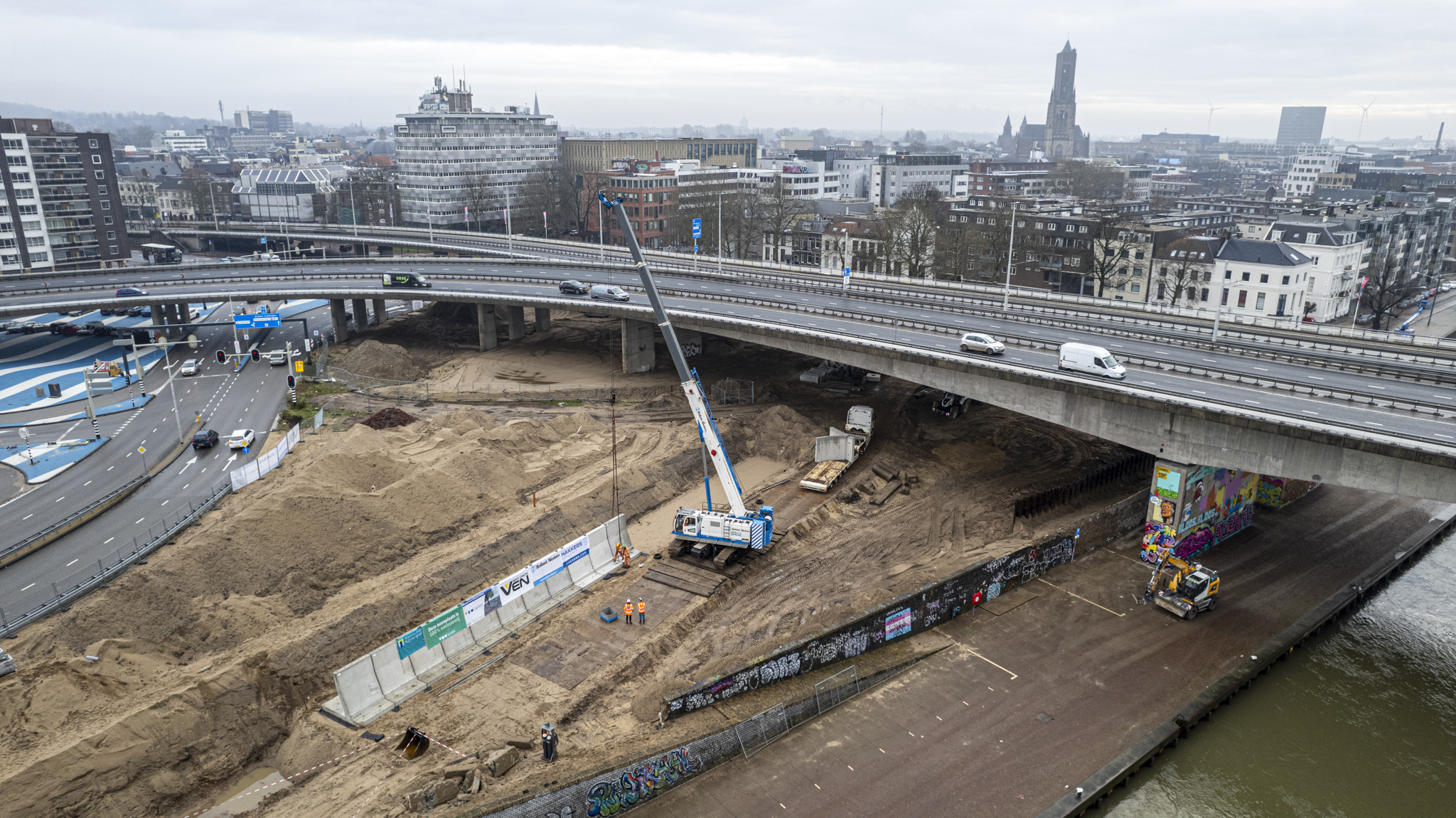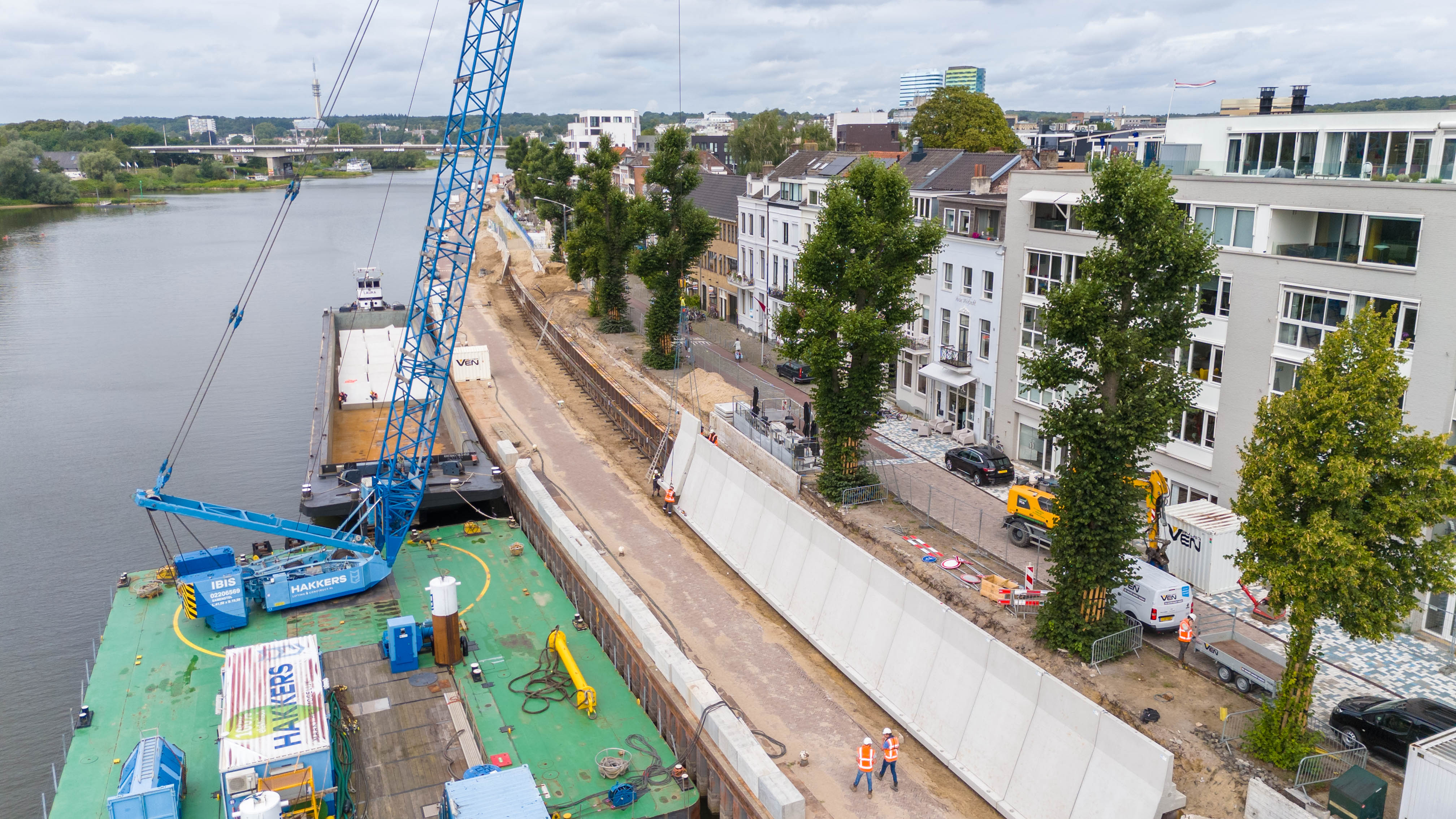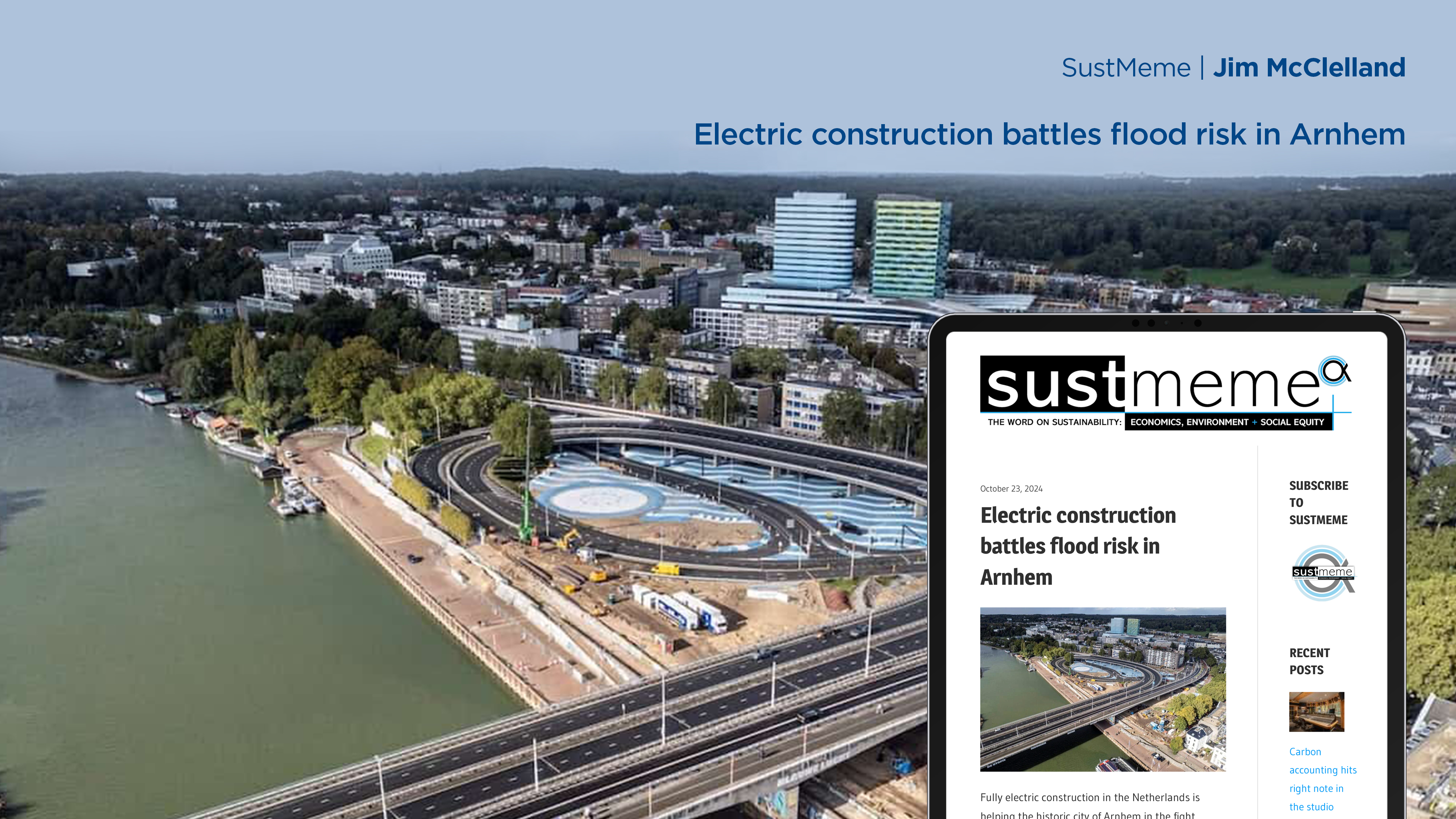For French, please click: La construction électrique combat le risque d'inondation à Arnhem
For Spanish, please click: La construcción eléctrica batalla el riesgo de inundación en Arnhem.
Fully electric construction in the Netherlands is helping the historic city of Arnhem in the fight against flood risk on the banks of the Rhine, with virtually zero emissions on site and a water hub for deliveries.
As a delta region, the Netherlands is vulnerable to flooding — not only from the sea, but also from rivers. Due to climate change, flood defences are increasingly having to cope with more and more water.
So, to prevent flooding, the Rijkswaterstaat (Dutch Ministry of Infrastructure and Water Management) has initiated a High Water Protection Programme (HWBP). It is working with 21 water boards nationwide on the biggest dyke reinforcement operation since the Delta Works, completed in the back half of the last century.
Over the next 30 years, as many as 2,000km of flood defences, mostly dykes, now need to be reinforced.
One of those dykes is the Rijnkade in Arnhem, another part of which runs beside the John Frost Bridge — the site of the famous WWII battle in 1944, later immortalised in the 1977 film A bridge too far.
The 1.2km reinforcement project on the banks of the river Rhine was commissioned by the Rijn and IJssel Water Board, along with the Municipality of Arnhem and the Province of Gelderland.
The project is being undertaken by the SAMEN construction consortium, comprised of a collaboration between Van der Ven, Ballast Nedam and Hakkers. Work began in 2023, with completion due 2025.

Fully electric site complete with water hub
Nearly all construction equipment used on site is fully electric, as is the piper truck that brings materials from the land hub to the quay. This reduces CO2 emissions, as well as nitrogen and noise pollution.Working in the middle of the city also brings additional safety and accessibility challenges. To minimise disruption to local residents and businesses, including riverside bars and cafés, the project team has opted to tackle the low quay and retaining wall first, followed by the high quay, working in small sections.
The precast concrete work has been delivered to site by water for assembly direct on the quayside. This almost completely removes any need to pour concrete on site, helping the project run faster and cleaner.
Use of the water hub for deliveries also cuts down dramatically on lorry movements in and out of Arnhem city centre. In total, as much as 96% of transport on the project is undertaken by water.
Taken together, these various sustainability measures — from use of electrical equipment and shore power, plus renewable HVO100 (Hydrotreated Vegetable Oil), as well as the water hub for logistics — have resulted in 99% emissions reduction on the project. In other words, this construction site is effectively zero emissions.
Total savings are equivalent to the impact of 203 laps around the earth by car.
Decarbonisation is doable, says Bramske van Beijma, Director of CSR and Digital Innovation at Ballast Nedam and a Board Member at Rönesans Holding, the parent company based in Turkey:
“We are working hard to achieve CO2-neutral construction sites by 2030. That is why we already reduced our CO2 emissions by more than 57% between 2008 and 2020.”

Materials reuse minimises waste and cuts carbon
Circularity is another important feature of the reinforcement works, with reuse of existing materials playing a major role on the project, helping minimise waste and minerals extraction, save energy and cut carbon.The scheme not only reuses stones and some 5,500 cubic metres of sand, but also the basalt lining of the original barrier. The basalt has been broken up and attractively repurposed by hand in a new façade.
Change not easy for construction, but necessary
Besides 100% CO2-neutral construction sites by 2030, Ballast Nedam also has the ambition to achieve energy-neutral operation by 2040. The company’s energy transition started with the low-hanging fruit — purchasing green electricity for construction and office sites, plus production facilities for such as concrete. It also began investing in zero-emission construction equipment, like rollers and crawler cranes.To help manage its electricity supply and consumption, Ballast Nedam then bought battery packs for construction sites. Every new car is now electric, too, so the company fleet will be emission-free by 2030.
Parent company Rönesans Holding also has ambitions in this area. For example, an agreement was signed in 2023 with TotalEnergies to develop 2GW of renewable energy by 2028, via wind farm projects in Turkey.
Change is not easy for a traditional sector like construction, but it is necessary, argues Bramske van Beijma:
“There is really only one conclusion possible. Sustainability constitutes your ‘licence to operate’. If you are not sustainable, you will soon no longer play a role. You have to change to be ready for the future.”

Source: Jim McClelland / SustMeme





